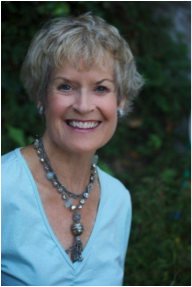How to Write About Your Art
“Writing About Your Art ” by Mary Edwards
When artists are asked to write about their artwork, they often remark: “What’s the point of writing about my art? I’m not a writer, I’m an artist!” The purpose of good art writing is to illuminate your artwork. After you are famous the critics will take over the task, but until then it’s entirely up to you.
People do read artist statements when they are worth reading. A good artist statement is powerful and personal and it takes real effort to do it well. Your artist statement is worth your time, because it helps you write other documents you’ll need as your career progresses.
Here’s a short list:
· an artist statement
· a letter (or email) to a gallery
· a narrative biography
· a proposal to a museum
· a profile on your social media site
· a “statement of purpose” for a grant or residency application
· the “about” page on your website
So, how to begin? Here are a few tips.
Be sure to write in your own voice. Use “I” and “me” and “my.” Your statement should sound like you on a good day, when you are rested and clear. Artists sometimes think that a statement needs to be full of big words and that it has to sound fancy to be good. The opposite is true. Clear, simple language is always best.
Can you see the difference in these two versions from an abstract painter?
First try:
“My work is about navigating the spans that divide life’s dualities, such as birth and death, division and union, waxing and waning. I record observations, both from memory and invention.”
It is hard to write well about abstract art, but this artist has written at such a high level that she has disappeared. The reader cannot find her or connect with her art.
When asked to put aside her first draft and just say what her work was all about, she immediately responded: “Everything!” This honest reply turned into the beginning of a good statement:
Second try:
“When people ask me what my work is about, I can only answer “everything!” My paintings come from my daily life, and are attempts to make sense of the world. They express my wishes and dreams for a better world, they celebrate happy occasions, my sadness and frustration, as I explore life’s dualities ….”
So, how do you write your own statement? Here are 7 questions to help you think about what you want to say. You can use them to prepare a new statement or revise the one you have.
1. What is your intention as an artist? Why do you make art?
2. What subjects or ideas interest you?
3. How do you get inspired to create a new work of art?
4. Describe your process. How do you select and work with materials?
5. What should the viewer notice when they look at your work? Are there details or techniques that are typical of you?
6. Who are the other artists you especially admire? How have they influenced you?
7. What else would you like viewers to know, to help them appreciate your art?
The first three questions overlap, as they are different ways for you to think about what your art is all about. This is often the hardest part to write, so if you get stuck just go on to other questions and come back later.
Here’s a response that works:
“My early work is about storytelling, where I create vessels that suggest imaginary journeys of the spirit.”
Questions 4 & 5 ask you to get specific about your process and materials. The best statements are grounded in the details of your work. When you’re trying to write about your art, don’t stare out the window! Look at your work and at the materials you use to make it.
Here are a few examples of artists being specific:
“When I paint bits of light on leaves, the paint itself becomes those flickers of light moving through the field.”
“For example, I call this series “Escaping the Noise” because the city is seen from far away in my compositions...“
“My sculptures incorporate unusual materials, like assorted ribbons, pipe cleaners, and tinsel ...”
Question 6 asks you to think about artists who have inspired you. Choose two or three and describe how their work influences your own. Be specific. You might mention their color palette, or subject matter, or technique.
Question 7 lets you include anything else you want people to know. Just be sure to keep the focus on your art.
Your statement will probably go through 3 or 4 rough drafts as you struggle to tell the truth about your art. The first draft might be full of repetition and awkward language. I call this “the ugly draft.” Don’t worry, you will get there. The final version should be no more than a page, and ideally shorter than that.
As your art develops, you’ll revise the statement. When you create a new series, or start working in a new medium, you might add a paragraph or two. Your statement is a living thing, and grows with you.
Mary Edwards
 Mary Edwards is a Career & Life Coach for Artists, based in the San Francisco Bay Area. She works with artists across the United States and all over the world.
Mary Edwards is a Career & Life Coach for Artists, based in the San Francisco Bay Area. She works with artists across the United States and all over the world.
Mary has a Ph.D. from the University of Michigan and received her coach training from the College of Executive Coaching. She brings a unique combination of business knowledge, art world experience, and professional coaching skill to her practice.
To receive Free Tips for Artists (twice a month), visit www.coachingforartists.com and click on “Mailing List Sign-Up.” If you would like to schedule a time to talk, see “Contact Mary.”
 Promote your event. Get a listing in callforentries.com today.
Promote your event. Get a listing in callforentries.com today.